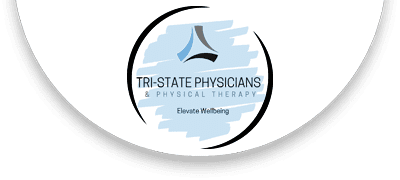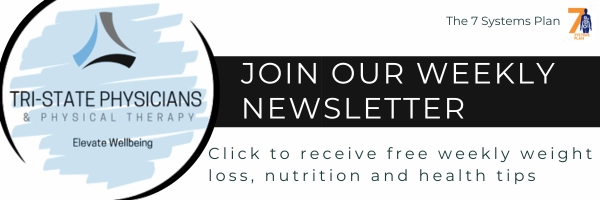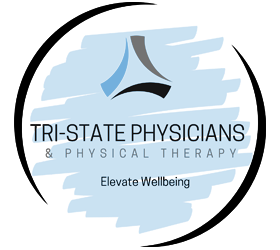Do One Thing and Slash Your Risk of Dementia 90% in South Sioux City NE

Ensuring good physical fitness isn’t just about sculpting a toned body—it’s foundational in defending against numerous chronic ailments that might surface later in life, including those potentially targeting the brain. A staggering 47 million individuals globally grapple with dementia. If we follow projections by the World Health Organization, this figure could surge to 75 million by 2030, possibly tripling by 2050. Preserving your cardiovascular health might be your ticket to drastically reducing this risk.
A study emerging from the University of Gothenburg in Sweden offers a glimmer of hope. It discovered that women having optimal cardiovascular health had a risk of dementia 88% lower than their moderately fit counterparts. Moreover, even average fitness levels make a difference. Women at the lower end of the fitness spectrum faced a 41% higher risk of dementia than those with moderate fitness.
Researchers gauged cardiovascular fitness using a step-by-step maximal ergometer cycling test. Think of cardiovascular fitness as a barometer for the blood circulation to vital organs like your heart and brain. The study’s lead and a seasoned physiotherapist, Helena Horder, pointed out an intriguing connection: “When the heart’s micro-circulation functions smoothly, the brain also benefits from the enhanced micro-vessel circulation.” The takeaway? A fit heart could very well translate to a fit brain. Let's take a look at how to reduce your risk of dementia in South Sioux City NE.
Cardiovascular Fitness: A Potential Shield Against Dementia in South Sioux City NE
In the rigorous cycling test, participants pedaled continually as additional resistance was added. The end was marked either by sheer exhaustion, prohibiting further cycling, or when alarming alterations were detected in their electrocardiogram or blood pressure, thereby establishing their maximum capacity.
Of the 191 female participants, a notable 23% were diagnosed with dementia over the expansive 44-year study span. Dementia occurred in 45% of those who prematurely ceased their cycling test before hitting their peak. Horder highlighted, “Many halting the test at suboptimal wattage likely showcased indicators of subpar cardiovascular health.” She hypothesized that cardiovascular anomalies might manifest several decades before an official dementia diagnosis.
Previous studies have echoed a similar finding. They’ve identified a link between regular physical activity and staving off the brain’s age-related atrophy. Exercise protects the integrity of the gray and white brain matter within critical regions and, in turn, stops cognitive decline. The researchers stated, “This data infers a robust correlation between cardiovascular fitness and the preservation of brain volume in aging individuals. It underscores the pivotal influence of aerobic capacity in bolstering neural vitality and cognitive acumen in the elderly.”
Other studies highlight similar observations. One study followed over 600 elders from age 70 and showed that the most physically active subjects exhibited the least cerebral loss over the next three years.
How Exercise Benefits Brain Health
Cardiovascular fitness might be a secret weapon against dementia. One key reason? Exercise boosts a protein called PGC-1alpha, which is connected to better brain health. People with Alzheimer’s usually have lower levels of this protein. Interestingly, more of this protein means fewer harmful proteins linked to Alzheimer’s.
There’s more good news. If someone is showing early signs of dementia, a mix of a healthy diet (7 Systems Plan), brain exercises, and managing health risks can slow down the decline. Starting an exercise routine activates another protein, brain-derived neurotrophic factor (BDNF). This protein keeps existing brain cells healthy and helps create new ones, making the brain grow.

Here’s an example: In a study, older adults who walked regularly for a year saw their memory-related brain region, the hippocampus, grow by 2%. The healthier and fitter they got, the larger their brain’s thinking area.
Other studies have shown that Alzheimer’s patients who exercise regularly or have consistent walking routines have fewer related symptoms and improved memory and brain growth.
Some researchers believe exercise might even change how the brain handles specific proteins, slowing Alzheimer’s. But remember, while fitness training is beneficial, it’s essential not to overdo it in the beginning. With intense workouts, a little can go a long way. A few short sessions a week can bring benefits without risks.
Boosting Cardiovascular Fitness: The HIIT Way
Elevating cardiovascular fitness doesn’t mean dedicating endless hours at the gym. High-Intensity Interval Training (HIIT) is an efficient, time-saving ticket to peak fitness. It incorporates bursts of intensity every couple of minutes into your exercise routine. Here’s why you might want to consider it:
- For those battling Type 2 diabetes, HIIT reduces arterial stiffness and reduces the resting heart rate. These changes could lower the risk of cardiovascular troubles commonly associated with diabetes.
- Aging gracefully with metabolic health? HIIT’s got your back. It enhances insulin sensitivity and cuts down those age-associated risks linked to cardio-metabolic diseases.
- Want to lose unwanted fat? An analysis of 39 studies showed that HIIT stands out as a speedy strategy to trim down fat deposits, particularly the dangerous abdominal and visceral fats.
- Overweight? In comparing HIIT and more traditional moderate-intensity workouts, both yielded similar body composition enhancements over 10 weeks. The difference? HIIT got you there with about 40% less time on the clock.
- And here’s one for the memory keepers: Canadian research suggests that high-intensity workouts might boost your memory. The secret lies in improving the function of the hippocampus, a vital memory center in the brain. This finding may pave the way for strategies to fend off Alzheimer’s.
In essence, HIIT isn’t just about fitness; it’s about optimizing your overall health in a fraction of the time. So, are you ready to give those intervals a go? In the 7 Systems Plan course, we give you the details of a simple way to do this.
The Mitochondrial Connection to Dementia Prevention
A pivotal step in fending off dementia and ensuring effective treatment is rejuvenating mitochondrial function. In a previous article, Apple Cider Vinegar: Hype or Real Deal? we outlined simple steps to ramp up mitochondria significantly.
It is startling to learn that signs of Alzheimer’s might crop up a whopping 20 years before the disease truly manifests. This evidence provides a window for timely interventions if we implement such changes early. By the time we notice a dip in memory, nearly half of our brain cells might already be compromised.
Dr. Dale Bredesen, a renowned figure in neurodegenerative research and author of “The End of Alzheimer’s,” puts forth a set of recommended screening tests. These evaluations allow individuals to gauge their risk and adopt preventive measures or even possible reversal strategies if symptoms are already evident. Here are some of the tests and their suggested ranges:
- Ferritin: 40 to 60 ng/mL
- GGT: Men: Less than 16 U/L, Women: Less than 9 U/L
- 25-hydroxy vitamin D: 40 to 60 ng/mL
- High-sensitivity CRP: Ideally, less than 0.9 mg/L
- Fasting Insulin: Best if less than 4.5 uIU/ml
- Omega-3 index & omega 6:3 ratio: Aiming for an omega-3 index above 8% and a 6-to-3 ratio between 0.5 and 3.0
- TNF alpha: Preferably less than 6.0
- TSH: Ideal range is less than 2.0 microunits/mL
- Vitamin B12: Ranging between 500 to 1,500 … And several other tests relating to thyroid functions, vitamins, and body metrics.
There’s an ongoing myth that dementia’s development is largely unalterable. However, there are a multitude of factors within our control that can tremendously decrease our risk. If you follow the 7 Systems Plan, you know your body can do amazing things if you give it what you need.
Enhancing cardiovascular fitness is a brilliant starting point — with potential benefits as significant as reducing risk by 90%. Coupling this with strategies targeting mitochondrial dysfunction, as we have discussed, can be a game-changer in warding off cognitive decline.
For your health,
Dr. Pat
Video of the Week
Recipe of the Week
Tips from Teresa’s 7 Systems Kitchen
- Use stainless steel or cast-iron cookware instead of aluminum.
- Use glass baking dishes.
- Line aluminum baking sheets with parchment paper.
- Use muffin tin paper liners.
- When covering dishes without lids to store food or use in the oven; use parchment paper or wax paper (do not use wax paper in the oven) and then cover with aluminum foil, so the foil does not touch the food.
- Do not wrap baked potatoes in aluminum foil. Spray them first with a little olive oil and sprinkle with Himalayan pink salt, then put them in a glass-covered (or use the above tip) casserole dish. Bake as usual.
Sign up below to get our weekly newsletter
sent directly to your email inbox!
OFFICE HOURS
Monday
8:00am - 6:00pm
Tuesday
8:00am - 6:00pm
Wednesday
8:00am - 6:00pm
Thursday
8:00am - 6:00pm
Friday
8:00am - 6:00pm
Saturday
8:00am - 10:45am
Sunday
Closed
Tri-State Physicians &
Physical Therapy Clinic
3900 Dakota Avenue #6
South Sioux City, NE 68776




